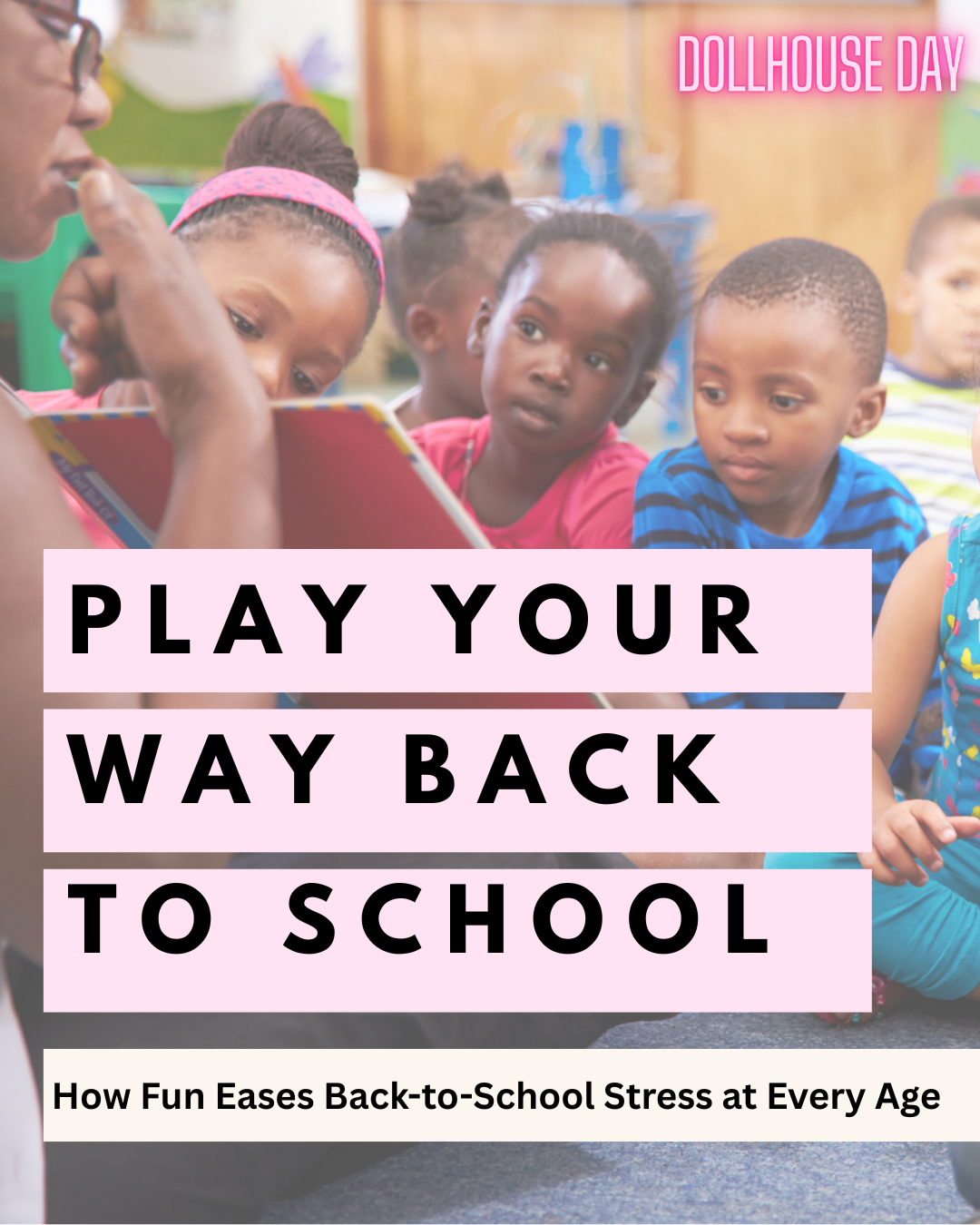Play Your Way Back to School
The start of a new school year brings excitement, growth, opportunity, and plenty of stress and nerves. Whether it’s a clingy preschooler at drop-off, a middle school kid navigating social shifts, or a college freshman learning to do laundry, these transitions are hard.
Play—yes, even for teens and adults—is one of the most effective and often overlooked, tools for easing these transitions. From building social connections to lowering anxiety, play provides a bridge between the relaxed rhythms of summer and the structure of the school year. It can be free and easy, and works whether you’re alone or with others. The most important thing is to just do it.
Below, we explore how age-appropriate play can support students from preschool to college, along with ways parents and caregivers can use play to make the whole family’s back-to-school season a little smoother.
Preschool: Building Security Through Play
For the youngest learners, the school environment can feel overwhelming: new faces, new rules, and separation from caregivers.
Play Strategy: Role-play the school day at home with dolls, stuffed animals, or a pretend classroom. Let your child act out both the “student” and “teacher” roles, so they can rehearse routines and expectations.
Why It Works: Pretend play helps preschoolers make sense of unfamiliar situations, giving them a sense of mastery before they face them in real life.
Grownup Tip: Play alongside your child—this shared activity reassures them you’re still a safe and present anchor.
Elementary School: Strengthening Friendships and Confidence
Kids in this stage are building academic skills but also learning how to cooperate, share, and handle peer dynamics.
Play Strategy: Organize small playdates or neighborhood games. Include cooperative activities like building a LEGO set together, cooking a simple recipe, or creating an art project.
Why It Works: Group play helps children brush up on collaboration and communication skills, which can translate to increased confidence in the classroom.
Grownup Tip: Use playtime to spark conversations about feelings—ask what characters in a game might be feeling, then relate it back to your child’s own experiences.
Middle School: Managing Change and Self-Expression
Middle school often comes with new schedules, larger peer groups, and a heightened focus on identity.
Play Strategy: Encourage hobby-based play—coding a game, learning a sport, making music, or joining a creative club.
Why It Works: Structured yet enjoyable activities give preteens a sense of competence and belonging, helping buffer the emotional ups and downs of adolescence.
Grownup Tip: Try a “low-pressure hangout” with your child—playing a video game together, tossing a ball, or working on a craft. The side-by-side nature of these activities can make it easier for them to open up.
High School: Balancing Work and Play
Teens face academic pressures, extracurricular commitments, and evolving social relationships. Play might seem frivolous—but it’s essential for stress relief and mental health.
Play Strategy: Support leisure activities that are purely for fun—pickup basketball, improv theater, escape rooms, or just board games with friends.
Why It Works: Recreational play fosters resilience, creativity, and social bonds, all of which can offset the intensity of high school life.
Grownup Tip: Model balance—let your teen see you making time for fun, which normalizes prioritizing joy alongside responsibilities.
College: Play as Connection and Stress Relief
Leaving home for college is one of life’s biggest transitions. Academic and social pressures can be intense, especially in the first semester.
Play Strategy: Join or form campus clubs that incorporate games, sports, or creative activities. Even intramural kickball or a weekly trivia night can be grounding.
Why It Works: Play creates opportunities to meet people outside the classroom and helps combat homesickness.
Grownup Tip: Encourage your college student to keep a “fun calendar” alongside their academic one—balancing study with social activities.
For Parents and Caregivers: Play is for You, Too
The back-to-school season can be stressful for adults as well—adjusting schedules, managing logistics, and navigating children’s emotional needs. Play isn’t just for kids; it’s a form of self-care.
Try a family game night, weekend outing, or shared creative project to strengthen your connection while taking a break from school talk.
Use playful moments to create emotional safety—a few minutes of laughter can reset everyone’s mood during a tough week.
Play is learning! Back-to-school transitions are easier when we remember that we learn best when we’re at play. Whether your child is starting preschool or their first college semester, making space for play can help everyone feel more grounded, confident, and ready for what’s ahead.


